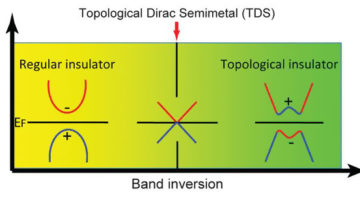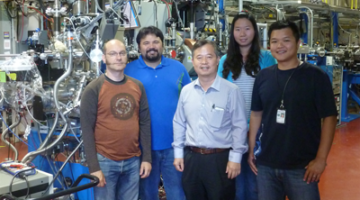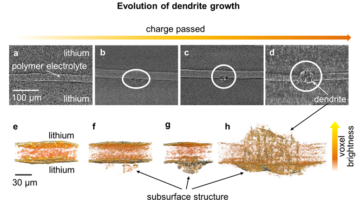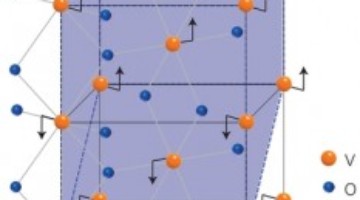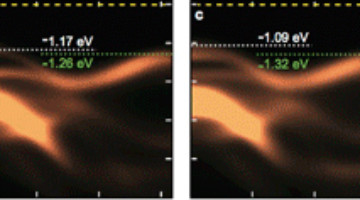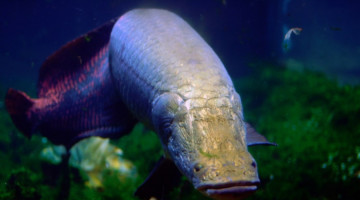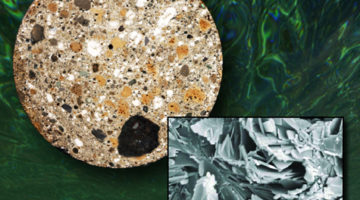All superconducting cuprates share a common structure: charge reservoirs stacked between layers of CuO2. An undoped version, including only C and O, is not available in nature. By growing epitaxial films with a pulsed-laser deposition facility, researchers stabilized a 2D version of CuO, which can be thought as composed by two CuO2 planes staggered and superposed.
An Iridate with Fermi Arcs
Researchers have discovered that “Fermi arcs,” much-debated features found in the electronic structure of high-temperature superconducting (HTSC) cuprates, can also be found in an iridate (iridium oxide) compound—strontium iridate. Read more »![]()
![]()
Skyrmion Behavior Revealed by Two X-Ray Studies
Two research groups have recently published separate studies in which soft x-rays reveal how skyrmions—quasiparticles made up of spin vortices—react to external fields. Their work lays the foundation for understanding these fascinating constructs and eventually utilizing them in spintronic applications. Read more »![]()
![]()
Graphene’s 3D Counterpart
ALS researchers have discovered a material that is essentially a 3D version of graphene — the 2D sheets of carbon through which electrons race at many times the speed at which they move through silicon. The discovery promises exciting new things to come for the high-tech industry, including much faster transistors and far more compact hard drives. Read more »![]()
![]()
Toyota Collaborates with the ALS and Molecular Foundry
Toyota has been working at the ALS for a few years now to gain deeper insight into the chemistry of electrolytes for use in magnesium-ion batteries. The hope is that the research eventually leads to a fully developed magnesium-based battery technology that would replace lithium-ion batteries with essentially twice the energy in the same volume. Toyota hopes to move toward this goal more quickly through a new collaborative research project at the ALS and the Molecular Foundry. Read more »
ALS Technique Gives Novel View of Lithium Battery Dendrite Growth
Lithium-ion batteries, popular in today’s electronic devices, could gain significant energy density if their graphite anodes were replaced with lithium metal anodes. But there’s a major concern with substituting lithium—when the battery cycles, microscopic fibers of the lithium anodes (“dendrites”) form on the surface of the lithium electrode and spread across the electrolyte until they reach the other electrode, possibly leading to short circuiting. Researchers have recently discovered that the x-ray microtomography capabilities at ALS Beamline 8.3.2 can give them a novel view of dendrite growth that’s likely to provide the insight needed to stop it. Read more »![]()
IBM Probes Material Capabilities at the ALS
Vanadium dioxide, one of the few known materials that acts like an insulator at low temperatures but like a metal at warmer temperatures, is a somewhat futuristic material that could yield faster and much more energy-efficient electronic devices. Researchers from IBM’s forward-thinking Spintronic Science and Applications Center (SpinAps) recently used the ALS to gain greater insight into vanadium dioxide’s unusual phase transition. Read more »![]()
![]()
Minding the Gap Makes for More Efficient Solar Cells
Using novel materials to develop thin, flexible, and more efficient photovoltaic cells is one of the hottest topics in current materials research. A class of transition metals undergoes a dramatic change that makes them ideal for solar energy applications. Read more »
The Molecular Ingenuity of a Unique Fish Scale
ALS research has shown how the scales of a freshwater fish found in the Amazon Basin can literally re-orient themselves in real time to resist force, in essence creating an adaptable body armor. Read more »![]()
![]()
Learning from Roman Seawater Concrete
Analyses of ancient concrete samples pinpointed why the best Roman concrete was superior to most modern concrete in durability, why its manufacture was less environmentally damaging, and how these improvements could be adopted in the modern world. Read more »![]()
![]()
